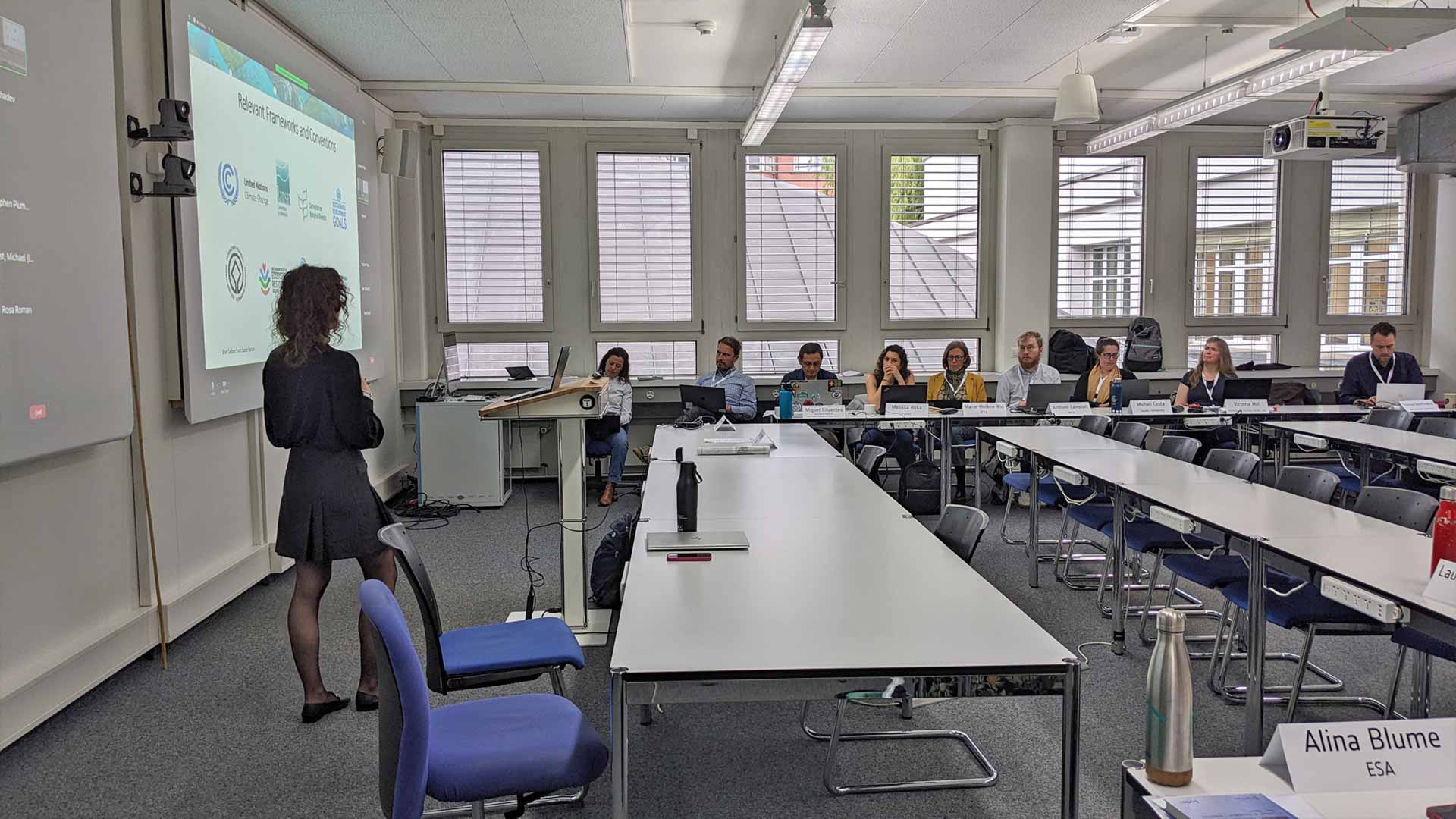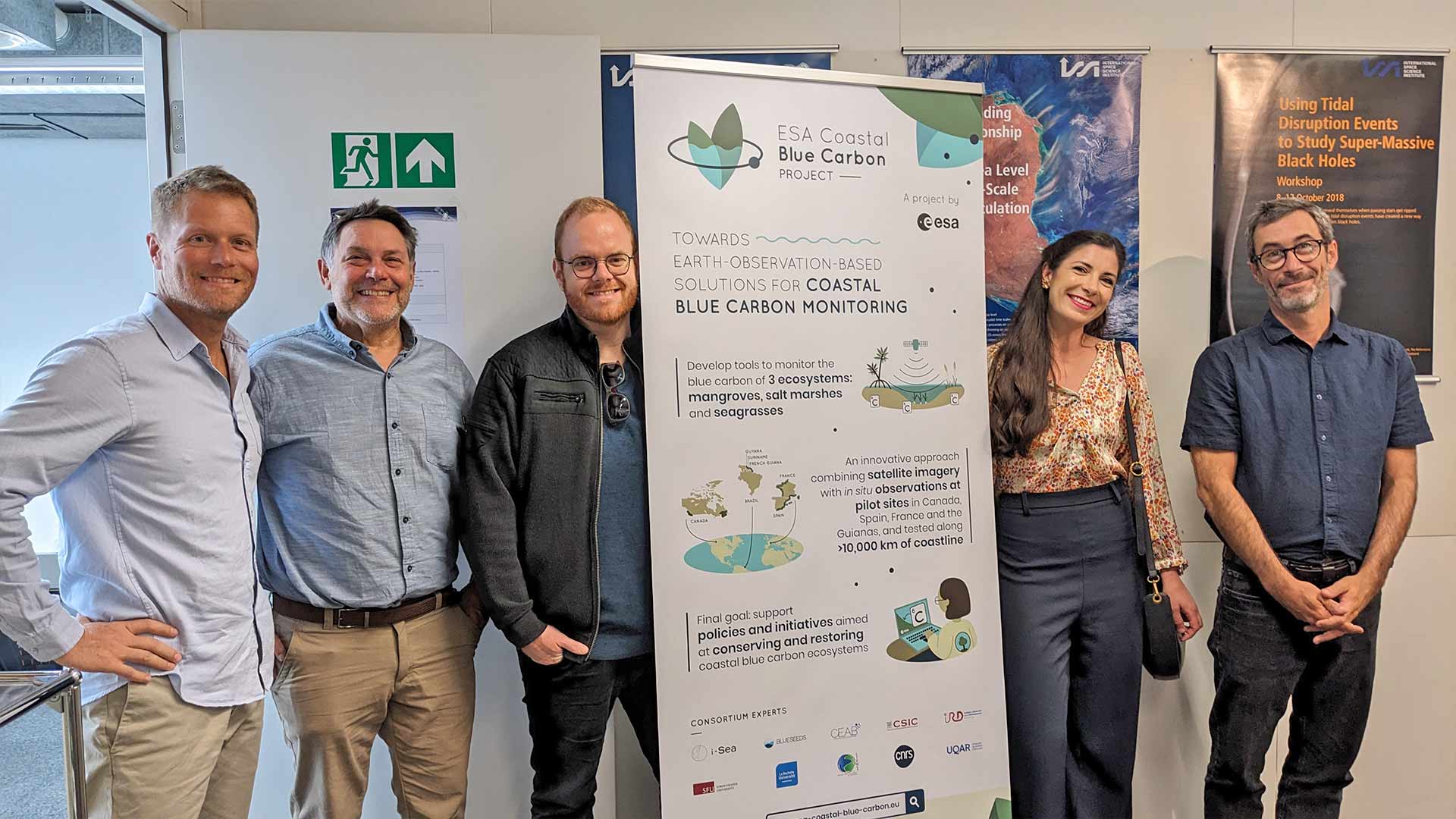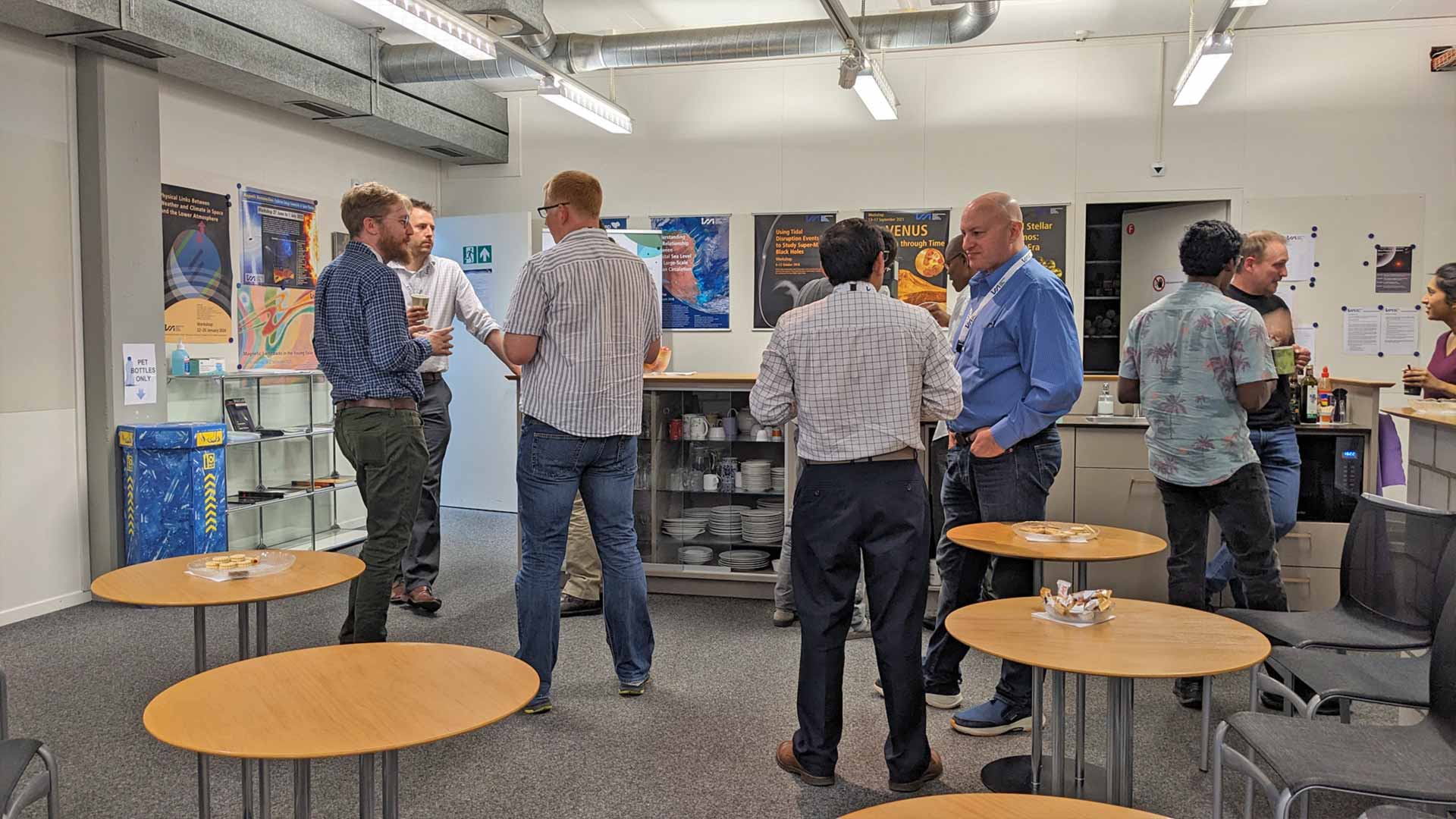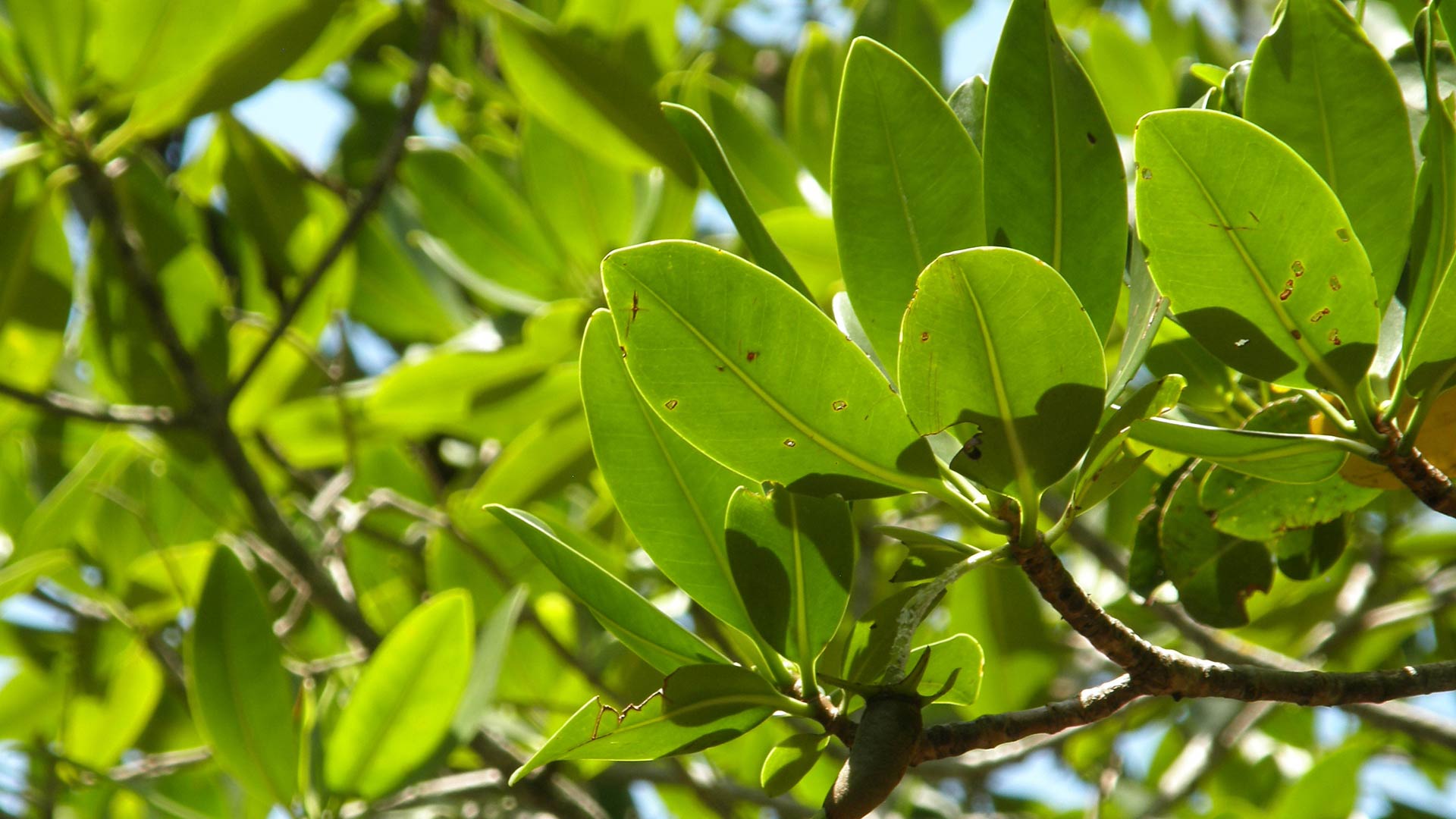May 2024
Our Consortium at the Coastal Blue Carbon from Space Forum
For our consortium, the forum provided a unique opportunity to improve our methods and assess possible obstacles to creating tools for monitoring carbon stocks in blue carbon ecosystems.

The Forum was organised by three of the world’s leading figures in Earth observation:
The European intergovernmental body shapes the development of Europe’s space capability and ensures that investment in space continues to deliver benefits to citizens of Europe and the world.
The European Space Agency’s work includes monitoring ecosystems that are crucial to the resilience of our way of life through the use of satellite data. One of these projects is the ESA Coastal Blue Carbon project. This event has been a source of inspiration for us as we move forward.

Our consortium is trying to estimate the carbon storage and evolution of blue carbon ecosystems by combining Earth Observation imagery with in situ observations. Our aim is to produce comprehensive and precise tools to monitor the evolution of carbon stocks in mangroves, seagrass meadows and salt marshes. This will help guide equitable climate policies, facilitate the participation of civil society, and support local managers and decision-makers in their management of the conservation and restoration of coastal Blue Carbon Ecosystems (BCEs).
For our consortium, the forum provided a unique opportunity to improve our methods and assess possible obstacles. Representatives of our member organisations led several sessions on subjects related to the monitoring of blue carbon ecosystems, including the economic value of blue carbon ecosystems and the estimation of carbon stocks from satellite measurements.
About coastal blue carbon ecosystems
The event is the fruit of a special collaboration between the ESA and the NASA, who joined forces to research solutions to one of the major challenges of our century: How can nature-based solutions, like blue carbon, help address climate change?
BCEs are increasingly being presented as cost-effective nature-based solutions due to the multiple services they provide for the conservation of coastal biodiversity, human well-being, protection against storms and carbon storage.
It is therefore crucial to monitor BCE accurately in order to assess the carbon balance resulting from disturbances induced by a wide range of drivers and to inform restoration and protection management plans. Rigorous remote sensing approaches can be beneficial for all scientific disciplines involved in BCE monitoring, including bringing new insights into the complex functioning of the blue carbon coasts.
Blue carbon is a term that is used to describe coastal and marine ecosystems that store important quantities of carbon sequestered from atmospheric CO2. BCEs such as mangrove, seagrass, and saltmarsh systems have the ability to store carbon in their biomass and soil for long periods of time.
International experts driving blue carbon science forward

Session 1
Policy and user needs for monitoring blue carbon
The participants discussed tools, products and indicators to support policies in line with the Global Stocktake of the Paris Climate Agreement.
Session 2
Economic value of blue carbon ecosystems
The participants discussed the challenges of carbon crediting methodologies and how remote sensing can support this financing mechanism for coastal conservation.
Session 3
Observing systems
The participants discussed the capabilities of Earth Observation to map blue carbon ecosystems’ extent, carbon stocks and their changes, and answer user and policy needs.
Session 4
External threats impact and recovery of these ecosystems
The participants discussed the capabilities of Earth Observation to help monitor and predict how external drivers affect blue carbon ecosystems, their carbon stocks and sequestration potentials.
Session 5
Climate change mitigation and adaptation
The participants discussed the impact of ecosystem protection, restoration, and creation on mitigation capabilities and how Earth Observation can contribute to quantifying the added value of these different conservation strategies.
For sessions 3-5, three thematic keynote speeches were given, one for each of the three blue carbon ecosystems: mangroves, seagrass beds and salt marshes. These were followed by three breakout sessions, also according to each ecosystem.
Our consortium taking the floor
On the role of the European Space Agency
ESA Ocean Scientist Marie-Hélène Rio, supervisor of the ESA Coastal Blue Carbon project and member of the Forum Organising Committee opened the forum. She described the different ways in which the European Space Agency is involved in understanding and protecting our natural heritage.
ESA works to better understand the complexities of the Earth system and the impact that climate change has, now and in the future, for international efforts and decision-makers to address challenging environmental issues – in turn benefiting society at large.

On giving economic value to blue carbon ecosystems
Marine Biologist Timothée Cook co-chaired the session Economic value of blue carbon ecosystems alongside Steven Lutz, Blue Carbon Lead at GIRD-Arendal. The challenges faced by carbon markets were presented, followed by a discussion on alternative market-based financing mechanisms for the conservation of mangroves, such as parametric insurance.
Timothée works as a Science Officer for BlueSeeds on blue carbon projects, including one focused on empowering West African communities to generate carbon credits out of mangrove conservation. He also provides trainings on financial planning to MPA managers in different parts of the world.

On observing and monitoring blue carbon ecosystems
Remote Sensing and Data Scientist Benoît Béguet co-chaired with Melissa Rosa and Aquatic Ecologist at the University of Cambridge Tom Worthington the plenary introduction of the session Observing systems at the forum.
The session addressed the challenges for estimating carbon stocks from satellite measurements. In particular, methods and uncertainties to consider for monitoring changes within carbon stocks, and on upscaling results to achieve global coverage, were discussed.

Benoît is currently managing i-Sea’s coastal wetland and land cover mapping service to develop solutions for coastal and biodiversity stakeholders.
A focus on mangrove ecosystems followed during a breakout session chaired by Thibault Catry, Remote Sensing Research Engineer for the French National Research Institute for Sustainable Development (IRD).
On the impact of external threats and climate change mitigation
These two final sessions were concluded by breakout sessions on the threats facing seagrass and tidal marsh ecosystems presented respectively by Oscar Serrano, Researcher working on ecosystems including Posidonia oceanica at the Blanes Centre for Advanced Studies (CEAB); and Marlow Pellat, Ecosystem Scientist working with Parks Canada on projects focusing on carbon dynamics in coastal ecosystems among others.
Outputs from the forum
The main output of the Blue Carbon from Space Forum will be a White Paper which will:
- Explore the key challenges and opportunities for EO data to support blue carbon science.
- Provide clear guidelines on how existing and upcoming EO missions can support blue carbon policy and decision-making.
Stay tuned for its release!